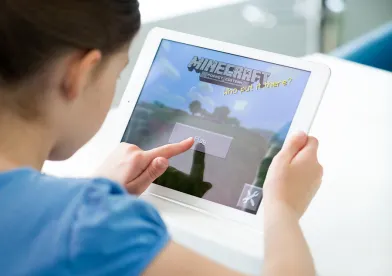On November 30, 2022, the Guangdong Higher People’s Court announced that NetEase was awarded 50 million RMB (over $7 million USD) and an injunction in an unfair competition case against Shenzhen Mini Play Company (深圳迷你玩公司) involving Minecraft and Mini Play’s similar sandbox game Mini World (迷你世界). NetEase has the exclusive right to operate Minecraft in China since 2016. This is believed to be the highest damages award in China for game infringement.

Minecraft on left versus Mini World on right.
Minecraft (我的世界) is a sandbox game developed by the Swedish company Mojang Studios in 2009. In May 2016, NetEase announced that it had obtained the exclusive right to operate the game in China, and had the right to enforce any intellectual property infringement and unfair competition claims. In the same month, Shenzhen Mini Play Company launched “Mini World” on Android , and then launched the iOS version and the computer version successively. In 2019, NetEase filed a lawsuit with the Shenzhen Intermediate People’s Court, accusing multiple core elements of the game Mini World of plagiarizing Minecraft. Specifically, NetEase alleged that the overall screens of the two games are highly similar, which constitutes copyright infringement and unfair competition. The court ordered Mini Play to stop the unfair competition, eliminate the impact, and pay 50 million RMB in compensation. The Shenzhen Intermediate People’s Court also determined that “Mini World” was infringing the copyright in Minecraft, and ordered Mini Play to delete the infringing game elements and compensate NetEase more than 21.13 million RMB. Subsequently, both parties appealed to the Guangdong High Court.
The Guangdong Higher Court found that the two games involved in the case are sandbox games, which only set basic game goals and rules, and provided players with basic game resources or elements such as wood, food, creatures, etc. Players freely explore and interact in the virtual world. Players can use the basic game resources preset in the game to create virtual objects, buildings, landscapes, and even game worlds by destroying, synthesizing and building using the basic game resources. Minecraft mainly makes profits through user charges with the cumulative number of downloads from various channels exceeding 3.36 billion with more than 400 million registered users since its launch.
The Guangdong High Court held that the overall screens of the two games constitute electronic works, that is, “audio-visual works” under the newly amended copyright law, but the similarity between the two lies in the design of the game elements rather than the screens of the games. Therefore, it rejected NetEase’s claim of copyright infringement. At the same time, the court held that Mini World and Minecraft are highly similar in terms of gameplay rules, and there are many overlaps in the details of game elements that have exceeded the limit of reasonable reference. By plagiarizing the design of game elements, Mini Play directly seized the key and core personalized commercial value of other people’s intellectual achievements, and seized business opportunities by improperly obtaining other people’s business benefits, which constituted unfair competition.
In determining the amount of compensation, the court held that Mini Play, as the infringing party, should have on hand relevant data of its business income, but refused to provide it to the court without justified reasons, and should bear the legal consequences of adverse presumption. According to evidence from a third-party platform, the profits of infringement by Mini Play far exceeded the amount of compensation requested by NetEase and therefore the upheld the award of 50 million RMB in compensation for unfair competition. The Court further ordered Mini Play to delete 230 game elements from Mini World that infringed.
The original announcement from the Guangdong Higher People’s Court can be found here (Chinese only).



 />i
/>i

